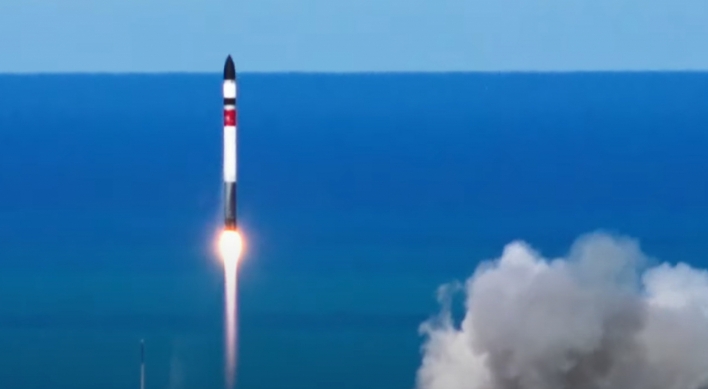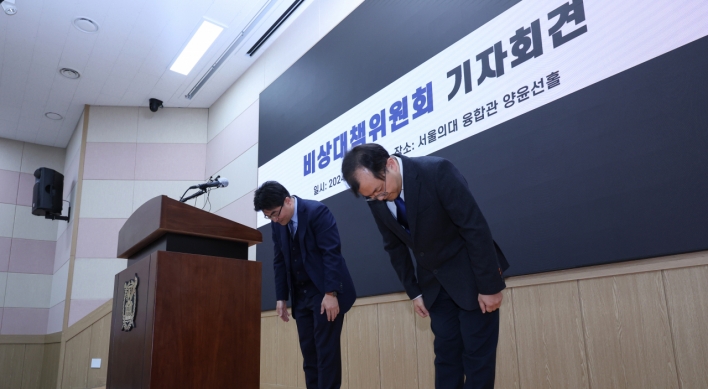<**2>
This is the 26th in a series of articles highlighting tourism spots in Seoul. The guide for planning weekend trips in the capital city will help readers rediscover Seoul. - Ed.
Increasing numbers of tourists are showing interest in exploring new areas on foot. To meet this demand the government is planning to create a walking trail from one end of the country to the other.
For the less ambitious, Seoul fortress provides an excellent opportunity for a hike.
Seoul has well laid-out bike lanes and walking trails along the Han River. You can find a good place for a walk within 10 minutes of most subway stations.
language="JavaScript" src="/khjs/banner/article_340.js">
Downtown Seoul is surrounded by mountains, including Mount Bukak to the north, Mount Nam to the south, Mount Nak to the east, and Mount Inwang to the west, all a manageable height of between 125 and 350 meters. These mountains encompass all the palaces in Seoul and are linked by the fortress wall, which stretches 18.2 km.
One of the best walks in Seoul is the path along Seoul Fortress Wall, especially the length between Sukjeongmun, which opened to the public in 2007, and Changuimun. It is not only readily accessible but also wooded, historical, and has great panoramic views of Seoul.
It is a daunting task even for an experienced hiker to walk around the entire fortress within a day. If you are a beginner, then choose a section can manage. Start with the most beautiful part, which includes Malbawi, Sukjeongmun, Cheongundae, Baekakmaru, and Changuimun.
Malbawi is an hour-walk from Hyehwa Station on Subway Line 4 or Gyeongbokgung Station on Subway Line 3. If you are not willing to walk that far, then start your adventure to Malbawi at Waryong Park behind Seoul Science High School and Sungkyunkwan University by taking village bus No. 8 at Hyehwa Station. Alternatively, drive to Samcheong Park. This will cut the walking time to about 30 minutes.
Walk some 15 minutes north from Hyehwa Station toward the back gate of Seoul Science High School and you will see a path lined with royal azalea and gingko trees along the fortress wall.
The Seoul Fortress Wall was built in 1397, three years after the transfer of the nation`s capital to Seoul in the Joseon period. At that time, the population of Seoul was roughly 100,000, but over 200,000 people were drafted from all over the country to complete the wall in 98 days.
The fortress wall is as high as 12 meters in places and you can look down the residential area outside the wall. Walk some 15 minutes from Waryong Park along the wall in the woods and you will be greeted by the Malbawi rest area with the Malbawi Observatory. The path is well signed, with signposts at each turning.
<**3>
The Malbawi rest area is a great spot to enjoy the open view of the Mount Bukak ridgeline and see the residential areas in Seongbuk-dong. Walk down along the fortress wall to the Malbawi information office. You will have to present ID to enter Changuimun, which closes at 3 p.m. and on Mondays. Guided tours of the wall are available every day at 10 a.m. and 2 p.m.
Sukjeongmun - some 400m from Malbawi along the wall - is the north gate of Seoul. As it was built for emergency use only, it is not served by a road.
During a period of drought in the Joseon period, the government closed Namdaemun, the south gate, and opened Sukjeongmun instead. As the south symbolizes yang and the north yin according to Confucianism, closing the south gate and instead opening the north gate means that the roles of yin and yang are reversed. However, the government closed Sukjeongmun during normal times as it believed that opening the north gate would make women, who are represented by yin, lewd.
Pass Sukjeongmun and you will see "Gokjang" on your way to Cheongundae via Chotdaebawi. Literally meaning "curved fortress wall," Gokjang refers to the protruded area designed to protect the castle from enemies climbing the wall.
Some 1,250 meters from Sukjeongmun is Cheongundae. This place has a great view of the National Folk Museum and the Gwanghwamun area. Engraved on the wall near Cheongundae is the date the wall was completed and the names and positions of the workers who were in charge of the construction. It is said that the government summoned these people when the wall needed repairs.
Pass Cheongundae and you will see a pine tree marked "Jan. 21 Attack." On Jan. 21, 1968, a group of armed North Korean spies attempted to attack Cheong Wa Dae. The 15 bullet scars on the tree are a reminder of the fierce battle.
The peak behind Cheongwadae is Mount Baekak, which is also the highest point on the Seoul Fortress Wall. Walk down some 900 stairs that link Mount Baekak to Changuimun and take a short rest at Dolgorae Bawi (dolphin-shaped rock) before you reach Changuimun and return to the pass at the information office right next to Changuimun. Changuimun served as a gateway to the northwestern part of Seoul. The ceiling of the arched entrance is decorated with a painting of a couple of phoenixes - although some say they are only chickens.
Seoul Fortress Wall extends from Changuimun to Mount Inwang. Some 7km of the wall was destroyed and only 10.5km remains along the mountains. Seoul City is now trying to restore the wall to have it designated as a UNESCO world heritage site.
By Heo Shi-myung Travel writer
Seoul Fortress Wall tourist information (www.bukak.or.kr)
<**4>
1. Malbawi Information Office:
765 0297. Go to exit 2 of Anguk Station on subway line 3, take village bus No. 2 from Anguk Station to the back gate of Sungkyunkwan University. Walk 10 minutes uphill to Waryong Park. Alternatively go to exit 1 of Hyehwa Station on subway line 4, take village bus No. 8 to the end of the line and continue up the hill for 10 minutes.
2. Changuimun Information Office:
730 9924. Leave exit 3 of Gyeongbokgung Station on subway line 3, take green bus No. 0212, 1020, or 7022 to Jahamun Ridge and continue uphill for 2 minutes.
3. Route and Time:
Malbawi Sukjeongmun Baekakmaru Changuimun (3.7 km): 2 hrs.
Summer (Apr.~Oct.): 09:00~15:00, Winter (Nov.~Mar.): 10:00~15:00



![[Exclusive] Korean military set to ban iPhones over 'security' concerns](http://res.heraldm.com/phpwas/restmb_idxmake.php?idx=644&simg=/content/image/2024/04/23/20240423050599_0.jpg&u=20240423183955)
![[AtoZ into Korean mind] Humor in Korea: Navigating the line between what's funny and not](http://res.heraldm.com/phpwas/restmb_idxmake.php?idx=644&simg=/content/image/2024/04/22/20240422050642_0.jpg&u=)

![[Graphic News] 77% of young Koreans still financially dependent](http://res.heraldm.com/phpwas/restmb_idxmake.php?idx=644&simg=/content/image/2024/04/22/20240422050762_0.gif&u=)




![[Pressure points] Leggings in public: Fashion statement or social faux pas?](http://res.heraldm.com/phpwas/restmb_idxmake.php?idx=644&simg=/content/image/2024/04/23/20240423050669_0.jpg&u=)







